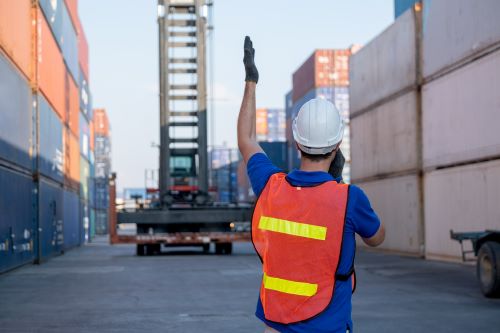
How Do Crane Operators See What They’re Doing?

Crane operators are highly trained professionals who are often experienced with a wide variety of different machinery—there are many types of cranes, after all—and an equally wide variety of techniques for their use. When most people think of cranes, however, they imagine the lattice boom crane or the telescoping boom crane: both are commonly seen on construction sites all over the world.
These cranes can be absolutely massive and are used for jobs ranging from constructing skyscrapers to clearing away debris after storms. With some of these jobs, visibility is poor. How do crane operators see what they’re doing? How do they coordinate tasks on this scale? Where do they learn the skills they need to do the job?
How Big Jobs Are Coordinated
While the crane operator is the “face” of the operation, large jobs involving heavy equipment usually require many people to coordinate the operation. Often, the work is overseen by a lift director, whose primary responsibility is the safety of the jobsite. This means that they check the site ahead of time, before any work begins, and ensure there aren’t any hazards that may pose a risk to the workers or any bystanders.
Once the work site has been secured, the lift director usually appoints one or more signal persons to help direct the crane operator. For large tasks, when the crane operator alone can’t see every element, they depend on a sophisticated system of signals that are relayed to them by other workers on the jobsite. Usually, this means hand signals for the hoisting process. If they are working with a load that is fully out of sight, the signal persons usually communicate with the crane operators via radio.
It goes without saying that both the crane operator and the signal person must be highly trained in the performance of their jobs to complete tasks like this safely. This is why most companies won’t hire crane operators who are not certified by a reputable organization, such as the NCCCO (the National Commission for the Certification of Crane Operators).
A Little Help From Modern Technology
So far, it seems like the answer to the question of how do crane operators see what they’re doing is a simple one: they don’t. Instead, they rely on highly trained, experienced team members to serve as their eyes and ears. However, lately, cranes have been taking advantage of modern technology as well. For example, cameras can be installed in the various parts of the crane, allowing the operator to get a view of the job, even when they can’t directly see it. Even so, working with signal persons is still the preferred method.
Where To Learn More
If you’re interested in a career as a crane operator—or signal person—you can stand to earn a great living while performing a rewarding and challenging job. However, you’ll need extensive training to do the work, and most employers won’t hire you without NCCCO certification. That’s why it’s a good idea to look for a suitable crane operator school, such as West Coast Training. There, you’ll learn the ins and outs of operating a crane, as well as several other types of heavy equipment, and earn your NCCCO license so that you can thrive in the very competitive world of heavy equipment operators.
